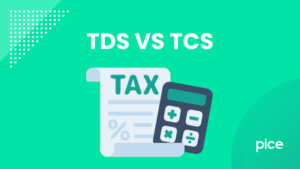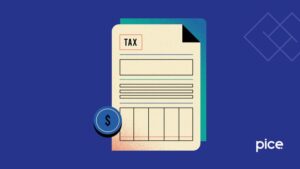DRC-01A Form | DRC 01a in GST: Simplifying Tax Compliance
- 20 Dec 24
- 8 mins
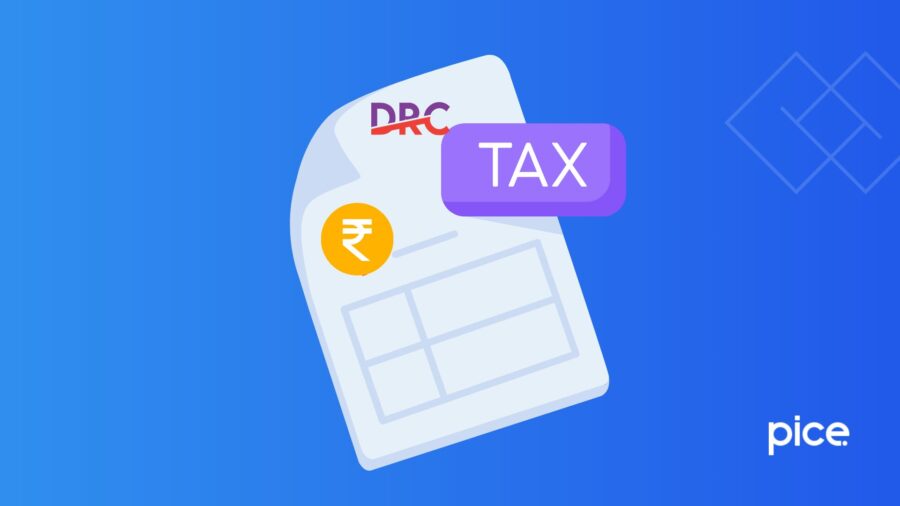
DRC-01A Form | DRC 01a in GST: Simplifying Tax Compliance
Key Takeaways
- Pre-show Cause Notice: DRC-01A notifies taxpayers about discrepancies in ITC or tax liabilities before a formal notice.
- Transparency Focus: It provides detailed tax, penalty, and interest calculations to ensure clarity.
- Response Options: Taxpayers can pay, partially settle, or contest liabilities using Part B of DRC-01A.
- Rule 142 Mandate: Issuance of DRC-01A is mandatory before serving a DRC-01 notice.
- Reconciliation Opportunity: It gives taxpayers time to address and reconcile discrepancies to avoid penalties.
DRC-01A in GST is a form that a tax officer issues to a GSTIN holder as an intimation in case the officer detects discrepancies in the Input Tax Credit (ITC) claimed and availed. A tax officer can further send this intimation if he/she detects underpayment of taxes.
However, the tax officer needs to send this intimation prior to sending a formal notice in form DRC-01. Learn how to reply to such a notice if you receive one as a GSTIN holder.
What Is the Purpose of Issuing Form DRC-01A?
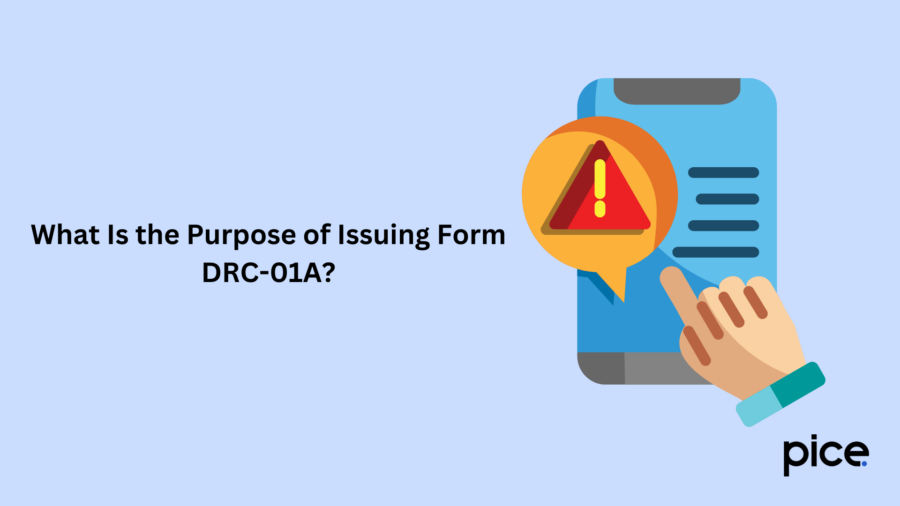
A proper officer issues Form DRC-01A as an intimation to a taxpayer, detailing the amount of tax, penalties and interest. It needs to be sent to the taxpayer prior to issuing DRC-01. This helps taxpayers know about potential liabilities and provides them with adequate time to settle the same before the tax officer issues a formal notice.
It is a measure undertaken by the GST authorities to enhance transparency and enable taxpayers to address their tax obligations.
Intimation of Tax Ascertained Through Part A of GST DRC-01A
Here are the changes implemented pertaining to the notice of demand in Rule 142 based on notification 49/2019, Central Tax in October 2019:
● In case a proper officer issues notice and order for the demand of amount payable to taxpayers under the GST Act, the authorised officer needs to issue notice under Sections 52, 73, 74, 76, 122 to 125, 127, 129 and 130. Further, the tax officer must provide a summary with the notice, electronically in GST DRC-01.
● Before the tax officer serves a notice to charge outstanding taxes with interest and penalty under Section 73 (1) or 74 (1), he/she has to communicate the details in Part A of GST DRC-01.
● The GST officer has to provide a statement electronically in GST DRC-02 under Section 74 (3), specifying the amount payable and its details or
● Before serving a notice or statement under the provisions of Section 74 (5) or as communicated under sub-rule 1(A), the taxpayer should inform the proper officer of payment in GST DRC-03. The GST officer thereon will issue his/her acknowledgement of payment acceptance in GST DRC-04.
● If a taxpayer referred to in sub-rule 1(A) makes partial payment of the amount that the tax officer communicated or wants to reply to the tax officer against the proposed liability, the taxpayer needs to submit the reply in Part B of GST DRC-01A.
Explanation of the Changes in the Rule and Its Effects
Here are the effects of the changes in the rule:
● Prior to Rule 142 (1A) introduction, a tax officer had to issue the show cause notice using Form GST DRC-01. However, after the introduction of the rule, the tax officer has to issue an intimation in GST DRC-01A under sub-rule 1 (A) before he/she serves a notice under Section 73(1) or 74(1).
This serves as a pre-show cause notice intimation enabling taxpayers to pay the differential amount within a certain extra time. In other words, the proper officer has to make his/her first communication regarding tax amount, interest and penalty through intimation under Rule 142(1) using GST DRC-01A.
● If you are a taxpayer who received GST DRC-01 directly from the tax officer without receiving GST DRC-01A, you can ask the GST officer to communicate using GST DRC-01A.
● On receiving GST DRC-01A, as a taxpayer you can pay the outstanding amount under Section 73(5) or 74(5) to avoid penalty imposition.
● If you do not agree with the tax liability, you can reply to the proper officer in Part B of GST DRC-01A. Normal adjudication will continue thereon and the proper officer will make the final decision.
How to Respond to GST Form DRC-01A?
Here is how you should respond to DRC-01A as a GSTIN holder:
● On receiving GST form DRC-01A intimation, you can respond to the proper officer in Part B of the form. You can communicate part-payment of the determined GST liability or if you do not accept the GST liability. Further, you can communicate if you have already replied earlier to the intimation.
● You need to fill in the information in GST form DRC-01A.
● You will receive intimation in form DRC-01B as a GST taxpayer if there is a difference in GST liability declared in a GSTR return such as GSTR-1/ IFF and GST amount paid in a GSTR return such as GSTR-3B/3BQ. Ensure you mandatorily reply to this intimation in GST form DRC-01B Part B. You need to provide all relevant information to reconcile the difference.
Objection on Non-issue of GST Form DRC-01A
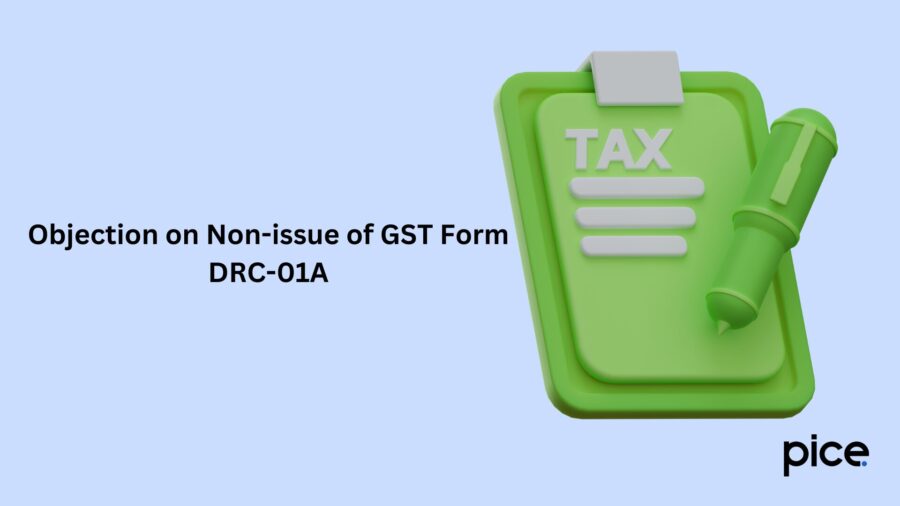
The Honorable High Court declared that a proper officer can issue GST form DRC-01A and GST form DRC-01 under Rule 142 of the CGST Rules, 2017. Further, a Deputy Goods and Services Tax Commissioner cannot issue a show cause notice if the Assistant Commissioner of Goods and Services Tax already issued it.
What Is the Format of Form GST DRC-01A?
Here is the format to obtain form GST DRC-01A:
Step 1: Visit the official GST portal.
Step 2: Log in to your account with your user credentials.
Step 3: Go to the ‘Services’ tab and choose ‘User Services’. Further, select ‘My Applications’.
Step 4: You can find your relevant appellate form in the ‘Appeals’ or ‘Legal Services’ option. Look for Form GST DRC-01A.
Step 5: Ensure you download the updated version of the form.
Step 6: To fill in the form accurately, you can go through the instructions in the form.
Step 7: Fill in the form and submit it online using the GST portal.
Conclusion
A proper officer issues form DRC-01A in GST to a taxpayer in the pre-show cause notice stage pertaining to a mismatch in claimed and availed ITC or other discrepancies related to a payment of tax. This form includes the penalties and interest proposed to be imposed on the taxpayer.
As a result, a taxpayer gets sufficient time to pay the outstanding taxes before receiving the formal show cause notice. Alternatively, if the taxpayer disagrees with the proposed tax liabilities, he/she can respond to the tax officer with supporting documents validating the claim.
💡If you want to streamline your payment and make GST payments, consider using the PICE App. Explore the PICE App today and take your business to new heights.
 By
By 











